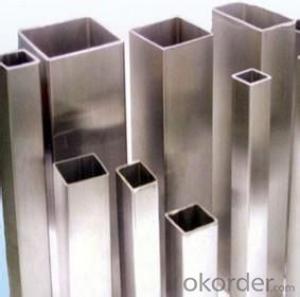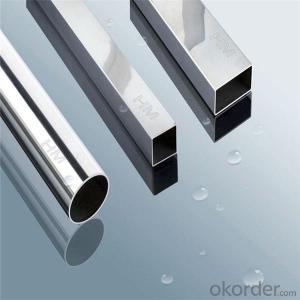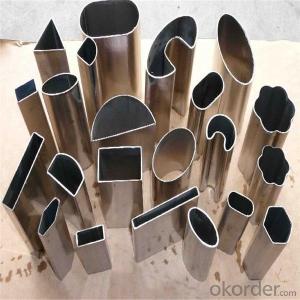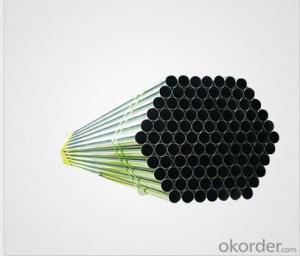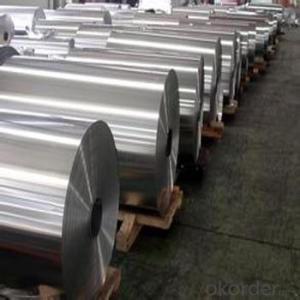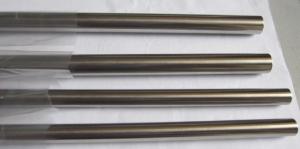3 Stainless Steel Pipe
3 Stainless Steel Pipe Related Searches
Best Paint For Stainless Steel Blanket Insulation For Steel Buildings Primer For Galvanized Steel Foam Filter For Stainless Steel H S Code For Stainless Steel Surface Grinding Wheels For Stainless Steel Surface Grinding Wheels For Hardened Steel Hole Saw For Stainless Steel Paint For Stainless Steel Stainless Steel For BbqHot Searches
Steel Mesh Panels For Sale Price For Stainless Steel Scrap Scrap Price For Stainless Steel Price For Stainless Steel Stainless Steel Tank For Sale Stainless Steel Sheets For Sale Cheap High Tea Sets For Sale Stainless Steel Tanks For Sale Stainless Steel For Sale High Density Fiberboard For Sale Solar Hot Water Collectors For Sale Scaffolding For Sale In Uae Scaffolding For Sale In Ireland Scaffolding For Sale In Houston Type Of Inverter For Solar Price Of Shipping Containers For Sale Types Of Inverter For Solar Stock Price For Aluminum Used Solar Inverter For Sale Steel Mesh Panels For Sale3 Stainless Steel Pipe Supplier & Manufacturer from China
Okorder.com is a professional 3 Stainless Steel Pipe supplier & manufacturer, offers integrated one-stop services including real-time quoting and online cargo tracking. We are funded by CNBM Group, a Fortune 500 enterprise and the largest 3 Stainless Steel Pipe firm in China.Hot Products
FAQ
- Two popular options for plumbing and industrial applications are stainless steel pipes and polyvinyl chloride (PVC) pipes. These pipes have distinct characteristics and advantages, making them suitable for different purposes. To begin with, stainless steel pipes are renowned for their exceptional durability and strength. They can withstand corrosion, rust, and extreme temperatures, making them ideal for harsh environments and outdoor use. Furthermore, stainless steel pipes have a long lifespan and require minimal maintenance, reducing replacement and repair costs over time. On the other hand, PVC pipes are lightweight and easy to install, making them a cost-effective choice for residential and commercial plumbing systems. They resist chemicals and provide good insulation. PVC pipes are also non-conductive, making them suitable for electrical applications. Additionally, PVC pipes are typically less expensive than stainless steel pipes, which is important for projects on a tight budget. Another important factor to consider is the environmental impact. Stainless steel pipes are fully recyclable, making them an environmentally friendly option. However, PVC pipes can raise environmental concerns due to the use of chlorine during production and the challenges of recycling. Ultimately, the decision between stainless steel pipes and PVC pipes depends on various factors, including the specific application, budget, durability requirements, and environmental considerations. While stainless steel pipes excel in terms of durability and resistance, PVC pipes are cost-effective and easy to install. It is crucial to assess the project's needs and consult professionals to determine the most suitable option for each case.
- What are the connecting methods of stainless steel pipes for indoor water pipes?
- Card type features: easy to install, connecting the external pipe, the internal rubber ring is evenly compressed into hexagonal. Scope of application: cold water system, pipe direct drinking water system, and more suitable for pipe installation. The utility model has the advantages that the connection is simple and convenient, the working hours are short, and the cost is moderate. Drawback is the single application, the maintenance of trouble, both the pipe sealing ring in aging and need to be replaced more trouble, because the connection was stuck, replacement is the need to both ends of the pipe to replace the sawing.
- Yes, stainless steel pipes are highly suitable for the paper and pulp industry. The paper and pulp industry involves the processing of various corrosive chemicals, high temperatures, and high-pressure conditions. Stainless steel pipes offer excellent resistance to corrosion, heat, and pressure, making them ideal for this industry. Stainless steel pipes have a high level of resistance to chemicals such as chlorine dioxide, bleaching agents, and other corrosive substances used in the paper and pulp industry. This resistance ensures that the pipes do not corrode or deteriorate over time, preventing leakage and ensuring the integrity of the piping system. Additionally, stainless steel pipes have excellent heat resistance, allowing them to withstand the high temperatures involved in the paper and pulp production process. They can handle both hot and cold liquids without any significant impact on their performance or structural integrity. Furthermore, stainless steel pipes have high strength and durability, making them capable of handling the high-pressure conditions often found in the paper and pulp industry. They can withstand the force and stress exerted by the fluids being transported, ensuring a reliable and long-lasting piping system. Moreover, stainless steel pipes are easy to clean and maintain, which is vital in industries with strict hygiene and sanitation requirements like the paper and pulp industry. Their smooth surface prevents the accumulation of debris and contaminants, reducing the risk of contamination and ensuring the quality of the final product. In conclusion, stainless steel pipes are highly suitable for the paper and pulp industry due to their resistance to corrosion, heat, and pressure. They provide a durable, reliable, and hygienic piping solution, making them an excellent choice for this industry.
- SA-179 what kind of material is steel pipe?
- Compared withsteel and roundsteelinsolid, flexural torsional strength in the same time, the weight is light, is a kind of economic section steel, widely used in the manufacture of structural parts and mechanical parts, such as the oil pipe, automobile transmission shaft, the bicycle frame and steel construction with scaffold with steel pipe manufacturing ring parts can be improved the utilization rate of materials, simplify the manufacturing process, material saving and working hours, has been widely used to manufacture steel tube.
- Yes, stainless steel pipes can be used for sewage treatment plants. Stainless steel offers exceptional resistance to corrosion, making it an ideal choice for handling wastewater and other corrosive substances commonly found in sewage treatment plants. Additionally, stainless steel pipes are durable, hygienic, and easy to maintain, making them suitable for the demanding conditions of sewage treatment facilities.
- There are several methods available for cutting stainless steel pipes. Below are some commonly used techniques: 1. Hacksaw: To manually cut stainless steel pipes, select a blade specifically designed for cutting metal. Ensure the pipe is secured in a vise or clamp to prevent movement. Mark a straight cutting line and saw through the pipe using a back and forth motion. Maintain consistent pressure to avoid causing damage. 2. Reciprocating saw: Another option is to use a reciprocating saw with a metal cutting blade. Clamp the pipe securely and mark the desired cutting line. Start the saw and steadily guide it along the marked line, applying constant pressure. This method is faster than using a hacksaw and requires less physical effort. 3. Pipe cutter: A pipe cutter is a specialized tool that provides clean and precise cuts. It consists of a sharp cutting wheel that rotates around the pipe, gradually tightening until the cut is complete. This method is efficient and results in a smooth, burr-free cut. However, it may not be suitable for thicker or larger diameter stainless steel pipes. 4. Plasma cutter or grinder: For thicker or larger diameter stainless steel pipes, a plasma cutter or grinder with a cutting wheel can be used. These power tools can cut through stainless steel quickly and efficiently. However, they require more expertise and safety precautions. If you are unfamiliar with these tools, it is advisable to seek professional assistance. Remember to wear appropriate safety gear, including gloves and eye protection, when cutting stainless steel pipes. Always double-check your measurements for accuracy and take necessary precautions to prevent injury.
- To prevent freezing in stainless steel pipes, there are several measures that can be taken: 1. Insulate the pipes: Insulation is one of the most effective ways to prevent freezing. Wrap the stainless steel pipes with insulation sleeves or use foam pipe insulation. This will help to maintain the temperature of the pipes and prevent them from getting too cold. 2. Apply heat tracing: Heat tracing is another effective method to prevent freezing. It involves installing electric heat cables along the length of the pipes. These cables generate heat and keep the pipes warm, preventing freezing. 3. Maintain a constant temperature: Ensure that the area where the stainless steel pipes are located is properly heated. If the pipes are exposed to extreme cold temperatures, it is important to maintain a constant temperature in that area. This can be achieved by using space heaters or by insulating the surrounding walls to retain heat. 4. Keep the water flowing: Moving water is less likely to freeze than stagnant water. If the stainless steel pipes are used to transport water, it is important to keep the water flowing through them, even if it's just a small trickle. This continuous flow will help prevent freezing. 5. Seal any air leaks: Inspect the area around the stainless steel pipes for any air leaks or drafts. Cold air entering the space can cause the pipes to freeze. Seal any gaps or cracks with weatherstripping or caulk to prevent the entry of cold air. 6. Monitor the temperature: Install a thermometer in the area where the stainless steel pipes are located to monitor the temperature. This will help you identify any potential freezing risks and take necessary precautions in advance. By implementing these preventive measures, you can effectively protect your stainless steel pipes from freezing and avoid potential damage.
- Stainless steel pipes are commonly used in a variety of applications such as plumbing, construction, automotive, and manufacturing industries. They are used for conveying fluids and gases, carrying water and sewage, as well as for structural purposes. Additionally, stainless steel pipes are popular in food processing, pharmaceutical, and chemical industries due to their corrosion resistance and hygienic properties.
















